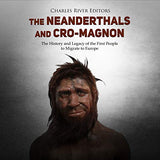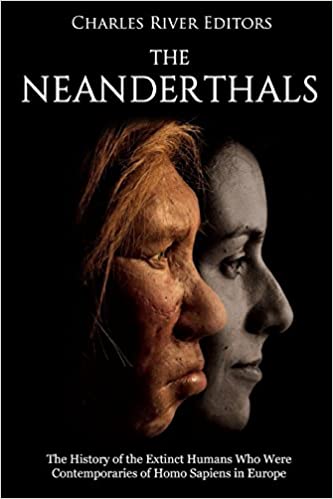The Neanderthals: The History of the Extinct Humans Who Were Contemporaries of Homo Sapiens in Europe
ISBN: 9781987534146
*Includes pictures
*Includes online resources and a bibliography for further reading
In popular culture, the term Neanderthal is used as a colloquial insult for a degenerate or someone perceived as stupid. This seems to have been the case even from the first recognition of the Neanderthals as a species. The first Neanderthal fossil discovery was that of a child’s skull in Belgium in 1829, but it was badly damaged. Another would be discovered in 1856 in a limestone mine of the Neanderthal region of what is present-day Germany, and a skull with differing distinct traits (indicating a different species than the Neanderthals) would be discovered just over a decade later in southwestern France. The latter specimen would come to be recognized as an example of the species Homo Sapiens, and these anatomically modern humans arrived in Europe between 45,000 and 43,000 years ago, around the time the Neanderthals are believed to started going extinct.
The Neanderthals are a member of the genus Homo just like Homo sapiens and share roughly 99.7% of their DNA with modern humans (Reynolds and Gallagher 2012). Both species even lived briefly during the same time in Eurasia. However, the Neanderthals evolved separately in Europe, away from modern humans, who evolved in Africa.
Physically, the Neanderthal skeleton was much more robust, suggesting that there was more room for muscle attachment. However, while Neanderthals were stronger than modern humans, the average height of the Neanderthal male was shorter, standing at only about 5’5 tall. Other physical characteristics that set the Neanderthals apart from modern humans were certain skull traits. The skull in general was low and elongated, featuring a sloping forehead with an occipital bun (a bone projection at the back of the skull), whereas modern humans have a more vertical forehead with no occipital bun. The cranial capacity of the Neanderthal skull was also greater than the modern human at 1,500–1,740 cc, and it lacked a chin and had more circular eye orbits, in contrast to Homo sapiens, which have a chin and tend to feature more rectangular eye orbits (Wolpoff 1999). Despite these differences, the Neanderthals may have been recognizable enough to interact with Homo sapiens or even blend in with Homo sapiens for the thousands of years they lived together in Europe.
*Includes online resources and a bibliography for further reading
In popular culture, the term Neanderthal is used as a colloquial insult for a degenerate or someone perceived as stupid. This seems to have been the case even from the first recognition of the Neanderthals as a species. The first Neanderthal fossil discovery was that of a child’s skull in Belgium in 1829, but it was badly damaged. Another would be discovered in 1856 in a limestone mine of the Neanderthal region of what is present-day Germany, and a skull with differing distinct traits (indicating a different species than the Neanderthals) would be discovered just over a decade later in southwestern France. The latter specimen would come to be recognized as an example of the species Homo Sapiens, and these anatomically modern humans arrived in Europe between 45,000 and 43,000 years ago, around the time the Neanderthals are believed to started going extinct.
The Neanderthals are a member of the genus Homo just like Homo sapiens and share roughly 99.7% of their DNA with modern humans (Reynolds and Gallagher 2012). Both species even lived briefly during the same time in Eurasia. However, the Neanderthals evolved separately in Europe, away from modern humans, who evolved in Africa.
Physically, the Neanderthal skeleton was much more robust, suggesting that there was more room for muscle attachment. However, while Neanderthals were stronger than modern humans, the average height of the Neanderthal male was shorter, standing at only about 5’5 tall. Other physical characteristics that set the Neanderthals apart from modern humans were certain skull traits. The skull in general was low and elongated, featuring a sloping forehead with an occipital bun (a bone projection at the back of the skull), whereas modern humans have a more vertical forehead with no occipital bun. The cranial capacity of the Neanderthal skull was also greater than the modern human at 1,500–1,740 cc, and it lacked a chin and had more circular eye orbits, in contrast to Homo sapiens, which have a chin and tend to feature more rectangular eye orbits (Wolpoff 1999). Despite these differences, the Neanderthals may have been recognizable enough to interact with Homo sapiens or even blend in with Homo sapiens for the thousands of years they lived together in Europe.















